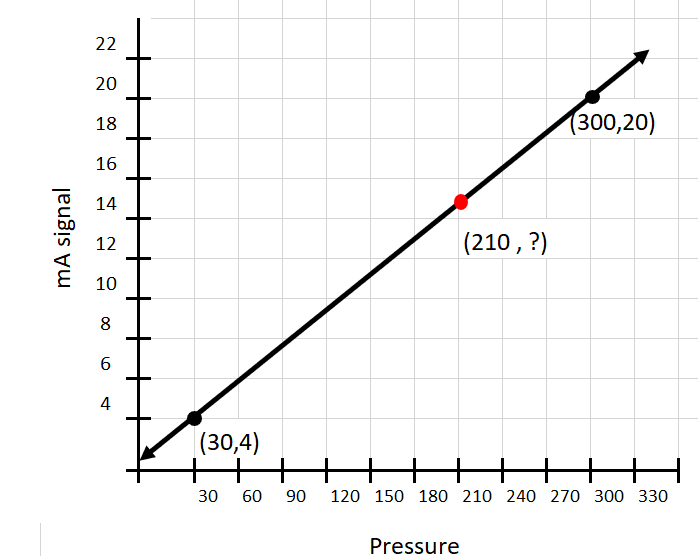Unit 4.4 Interpolation on Linear Equations
Interpolation
Interpolation is a way for us to find unknown values between 2 known points on a line. It is very useful when dealing with instrumentation because most instrumentation output is close to linear. You can use the slope intercept method or use the interpolation equation
Transducers are equipment that takes a physical input, like pressure and temperature, and converts it to an electrical signal (current, voltage or resistance). Some of the most common output methods of transducers are 4-20 mA, 0-5 V and 0-10 V
Using Interpolation to find the output of a transducer
You have a pressure transducer that reads pressure values between 30 and 300 psi. It transmits a signal to your computer in the range of 4 to 20 mA. If the pressure transducer is reading 210 psi, what should the corresponding mA reading be
At the bottom of the measurable range (30 psi) the transducer will output a signal of 4 mA
At the top of the measurable range (300 psi) the transducer will output a signal of 20 mA

First thing is to write out the ordered pairs
(30, 4) and (300, 20)


Next, we can find the slope of the line using our slope formula

Find the intercept

Our equation is

Then we can plug any pressure value in for x and get our corresponding y value in mA

At 210 psi, the computer should be receiving a mA signal of 14.67 mA
Other methods
You can use the slope intercept method to find an unknown point on a line but you can also use the interpolation equation

- y is the unknown value
- x is the known x value for y
- x1 , x2 , y1 and y2 are the upper and lower bounds of your line
Using Interpolation Equation to find the output of a transducer
Using the same example as above, find the value of the mA reading using the interpolation equation

You should receive the same answer either method